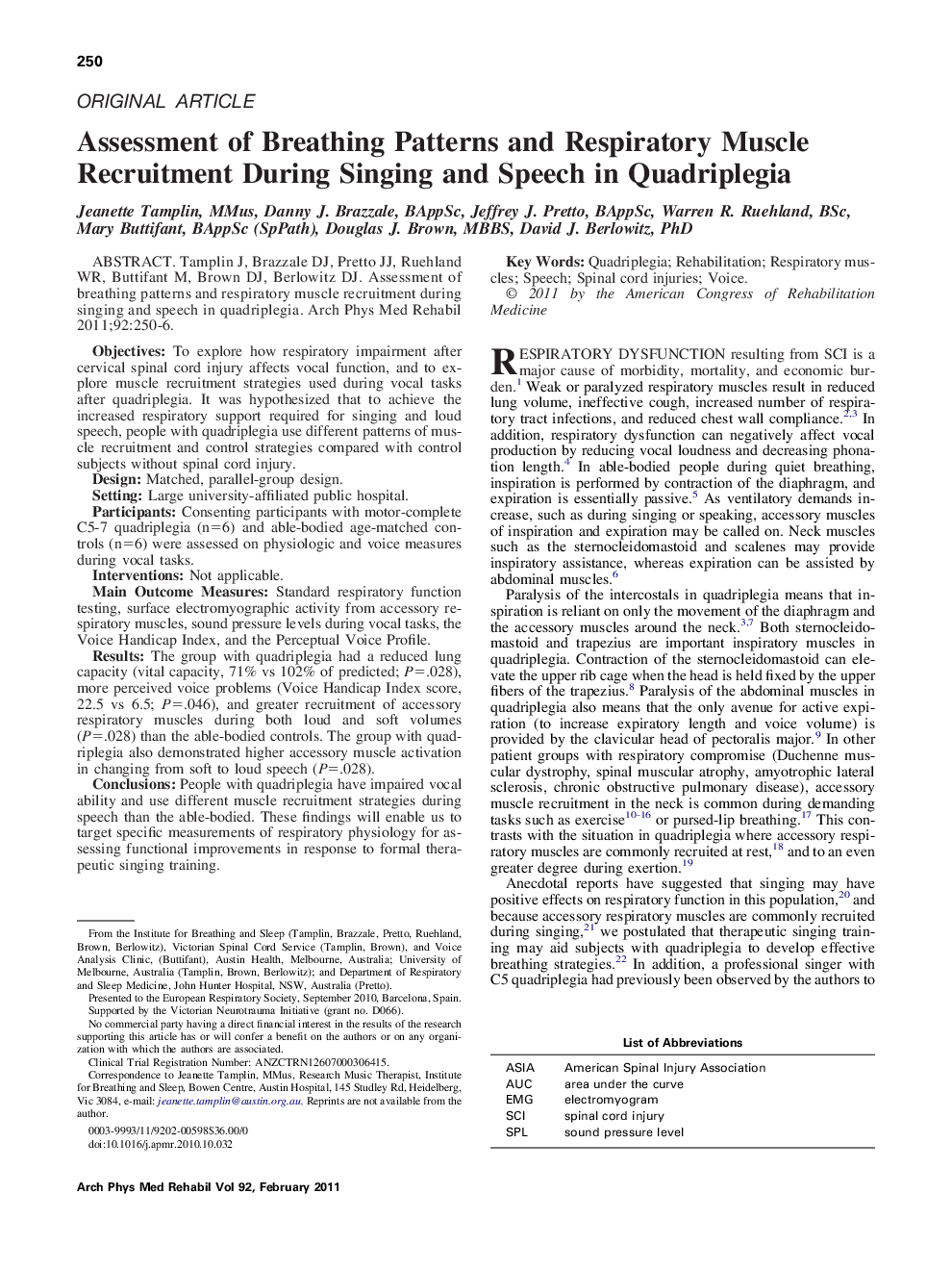| کد مقاله | کد نشریه | سال انتشار | مقاله انگلیسی | نسخه تمام متن |
|---|---|---|---|---|
| 3450484 | 1595743 | 2011 | 7 صفحه PDF | دانلود رایگان |

Tamplin J, Brazzale DJ, Pretto JJ, Ruehland WR, Buttifant M, Brown DJ, Berlowitz DJ. Assessment of breathing patterns and respiratory muscle recruitment during singing and speech in quadriplegia.ObjectivesTo explore how respiratory impairment after cervical spinal cord injury affects vocal function, and to explore muscle recruitment strategies used during vocal tasks after quadriplegia. It was hypothesized that to achieve the increased respiratory support required for singing and loud speech, people with quadriplegia use different patterns of muscle recruitment and control strategies compared with control subjects without spinal cord injury.DesignMatched, parallel-group design.SettingLarge university-affiliated public hospital.ParticipantsConsenting participants with motor-complete C5-7 quadriplegia (n=6) and able-bodied age-matched controls (n=6) were assessed on physiologic and voice measures during vocal tasks.InterventionsNot applicable.Main Outcome MeasuresStandard respiratory function testing, surface electromyographic activity from accessory respiratory muscles, sound pressure levels during vocal tasks, the Voice Handicap Index, and the Perceptual Voice Profile.ResultsThe group with quadriplegia had a reduced lung capacity (vital capacity, 71% vs 102% of predicted; P=.028), more perceived voice problems (Voice Handicap Index score, 22.5 vs 6.5; P=.046), and greater recruitment of accessory respiratory muscles during both loud and soft volumes (P=.028) than the able-bodied controls. The group with quadriplegia also demonstrated higher accessory muscle activation in changing from soft to loud speech (P=.028).ConclusionsPeople with quadriplegia have impaired vocal ability and use different muscle recruitment strategies during speech than the able-bodied. These findings will enable us to target specific measurements of respiratory physiology for assessing functional improvements in response to formal therapeutic singing training.
Journal: Archives of Physical Medicine and Rehabilitation - Volume 92, Issue 2, February 2011, Pages 250–256